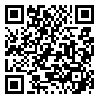BibTeX | RIS | EndNote | Medlars | ProCite | Reference Manager | RefWorks
Send citation to:
URL: http://sjsph.tums.ac.ir/article-1-29-en.html
Background and Aim: The purpose of this study was to compare the two techniques of fault tree analysis (FTA) and Tripod-Beta using the analytic hierrarchy process (AHP) for choosing the preferred technique to be used in the analysis of grave accidents in a steel-manufacturing company.
Materials and Methods: This research project was carried out in three main phases. In the first phase two disastrous accidents were sketched for analysis and, using the two techniques of FTA and Tripod-Beta, the causes for their occurrence were determined. In the second phase 7 criteria were chosen for comparing the two techniques. Finally, in the third phase, the two techniques were compared on the basis of chosen criteria, using AHP.
Results: The findings showed that the criterion for the number of accidents' agents with a priority of 0.435 had the highest priority, followed by quantitative ability, cost of analysis, time spending, and software need with a priority of 0.07, 0.059, 0.038, and 0.036, respectively.
Conclusion: Considering all the chosen criteria, it can be concluded that the fault free analysis technique with a priority of 0.624 is superior to Tripod Beta technique with priority a priority of 0.35.
Received: 2011/07/3 | Accepted: 2011/12/20 | Published: 2013/09/11
| Rights and permissions | |
 |
This work is licensed under a Creative Commons Attribution-NonCommercial 4.0 International License. |





